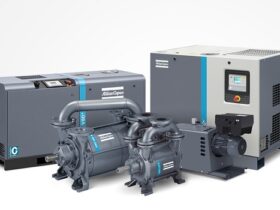The construction industry is one of the largest in the world, and cement and concrete are literally the building blocks of its success.
Evolving from prehistoric caves to today’s skyscrapers, concrete structures have been and will continue to be vital components of modern civilization, providing durable and reliable support for buildings, roads, bridges, tunnels and dams. So much so that concrete is the most consumed material on earth, second only to water, while the steel used to reinforce it is by far the most commonly used metal. But this does not come without high environmental costs: concrete accounts for 8% of global CO2 emissions, most of which comes from the extraction and transportation of aggregates such as sand, gravel and crushed stone.
Much of building healthier cities is making concrete more sustainable, but this comes with many challenges. Stopping concrete production is simply not possible, and replacing it entirely is more of a long-term approach that still seems out of reach. So today it’s more about finding ways to reduce the environmental impact of a material without compromising its high performance. But where to look? Recent research suggests that one solution may be found in recycled industrial waste, specifically a by-product of steel production called steel slag.
Although its large-scale architectural potential is still being explored and tested, steel slag may have a promising future in the construction industry as a partial replacement for cement or aggregate. This has been studied in several studies over the years, and many researchers and engineers have already discovered that it is possible to use steel slag as a suitable concrete aggregate. Regarded as one of the most reassuring wastes, steel slag is an inevitable by-product of steel production. It is produced in large quantities during the separation of molten steel from impurities in steel furnaces. The slag forms as a liquid melt and is a complex solution of silicates and oxides that solidifies on cooling, resulting in a glassy granular material, which is then crushed to an appropriate size for use as aggregate in concrete (or further processing into other products) .
Due to its mechanical strength, porosity, wear resistance and water absorption, steel slag is already being used as fine and coarse aggregate for asphalt concrete road mixes, as well as raw material for clinker, as ballast for railways and as aggregate in various excavations. With cutting-edge research and testing, its use in concrete is gaining recognition for its environmental and physical properties, which likely means it may soon find other uses. For example, as a suitable material for high-strength concrete structures such as bridges and skyscrapers, or for any other building that is traditionally built from conventional concrete and can take advantage of the added strength and stability. Engineers, architects and designers can take advantage of these promising qualities and use the material effectively to create healthier, better quality buildings.
However, it is important to note that steel slag concrete is not as well studied as traditional concrete and the way it is developed today still has some limitations, among which is the expansion potential due to the presence of metallic iron in the slag and other reactions with concrete components that may be undesirable. in the long run. But even as a destructive material, steel slag concrete has extraordinary potential. And as the world only gets warmer, innovative materials of this kind will always be worth exploring.












Leave a reply